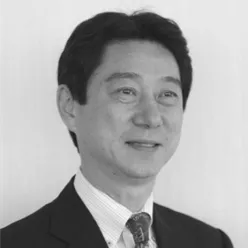
What does “魁 (Sakigake)” mean?
It means things/people who stand ahead of the curve or are pioneers. Sakigake aims to stably generate superior return by investing extensively in companies which share a growth story. Innovative services/products which create an impact by solving societal issues or even changing society itself are often invented by a single or a small collection of companies. However, as the services/products themselves pervade society this creates a ripple effect for a large number of companies with related business. Creating a connected growth story.
Key Facts
Investment Objective
Generate consistent excess returns against the benchmark. Portfolio managers and analysts focus on structural changes in society/industry as themes which can be the main source of returns in the long term.
Fund Size
USD 42.2 million as of November 2025
Launch Date
21st June 2018
Base Currency
JPY
Investment Method
Bottom-up, research driven
Fund Domicile
Luxembourg
Lead ISINs
Class B JPY - LU1824452749
Performance
The fund aims to generate consistent excess returns against the benchmark overthe mid-to-long term. The portfolio invests mainly in mid-to-large cap equities with growth potential which benefit from structural changes in society and industries with a concentrated portfolio. We construct a portfolio by employing two approaches to stock selection: a thematic approach and a bottom-up approach.
Please refer to the prospectus of the Fund and to the key investor information document ("KIID") and do not base any final investment decision on this communication alone. Your Capital is at risk. Past performance does not predict future returns. Complete information on the risks of investing in the Fund are set out in the Fund's prospectus. The Fund's return may increase or decrease as a result of the changes to investment performance as well as foreign exchange rates.
Japan Sakigake High Alpha Fund is Actively Managed: The policy of the Fund is not to track performance against any index. The benchmark is used as a reference for performance measurement only, and not used to determine the composition of the Fund.
Managers and Analysts

Katsunori Ogawa joined the firm in 1994. He was appointed as a client relationship manager for public pension funds in 1997.
Katsunori Ogawa joined the firm in 1994. He was appointed as a client relationship manager for public pension funds in 1997.
In 2002, Katsunori became a portfolio manager of a Japanese equities active strategy. He applies a thematic/top-down approach in addition to bottom-up stock picking to generate alpha on a constant basis. He is one of the first investors to capture Asian (especially Chinese) consumer’s demand for Japanese consumer durable goods and was an early investor in companies like Unicharm (a paper nappy maker) and Yakult (lactic fermenting beverages maker).
Katsunori received a BA in economics from Keio University. He is a Chartered Member of the Securities Analysts Association of Japan (CMA) and a Certified International Investment Analyst (CIIA).
Risk Information
UCITS Risk Profile
The Synthetic Risk and Reward Indicator (SRRI) is designed to provide a consistent calculation and presentation of risk information for all UCITS funds. The SRRI is a numerical scale between 1 and 7; with 1 meaning low risk/reward and 7 a higher level of risk but with potential for a higher level of return.
- This Fund is ranked at 6 because funds of this type have experienced high rises and falls in value in the past. Although this is a high risk ranking it is not the highest.
- Please note that even the lowest risk ranking can lose you money and that extreme market circumstances can mean you suffer severe losses in all cases. This indicator does not take into account the following risks of investing in this Fund:
- Investing mainly in the Japanese market means that investors in the Fund are exposed to the movements of that one particular economy.
- Changes in currency exchange rates can cause the value of the investment to fall or rise.
- Please refer to the General Risk Considerations section of the prospectus for more information.
PRIIPS Performance Scenarios
What you will get from this product depends on future market performance. Market developments in the future are uncertain and cannot be accurately predicted. The unfavourable, moderate, and favourable scenarios shown are illustrations using the worst, average, and best performance of the product over the last 10 years. The scenarios shown are illustrations based on results from the past and on certain assumptions. Markets could develop very differently in the future.
The figures shown include all the costs of the product itself but may not include all the costs that you pay to your advisor or distributor. The figures do not take into account your personal tax situation, which may also affect how much you get back. The stress scenario shows what you might get back in extreme market circumstances.
For full details please refer to the PRIIPS KID documents available for download below.


